(a) A conductor having cavity C is charged as shown in Fig. What is electricfied inside the cavity ? Does the result depend upon the shape and size of the cavity ?

(b) Can Gauss's law tell us exactly where teh charge is located inside the Gaussian surface ?
(a) It is known that electric charges reside always on the surface fo conductors only. Inside the conductors , charge is zero. The result is independent of the shape and size of the cavity will always be zero irrespective fo the size of the cavity.
(b) Gauss's law cannot determine the position of charge. This is because, acccording to Gauss's Law, electric flux over a Gaussian surface in vacumm is 1/∈0 times the charge enclosed inside the surface . Thus Gauss's law explains that the charge is inside the closed surface , and for every position of the charge inside teh surface, the electric flux is the same. Hence Gauss's Law. fails to specify the position of charge inside the closed surface.
Topper's Solved these Questions
- ELECTROSTATICSBOOK - PRADEEPCHAPTER - ELECTROSTATICSEXERCISE - NCERT QUESTIONS
13 Videos
- ELECTROSTATICSBOOK - PRADEEPCHAPTER - ELECTROSTATICSEXERCISE - ADDITIONAL QUESTIONS
2 Videos
- ELECTROSTATICSBOOK - PRADEEPCHAPTER - ELECTROSTATICSEXERCISE - VERY SHORT ANSWER QUESTIONS
5 Videos
- ELECTRONIC DEVICESBOOK - PRADEEPCHAPTER - ELECTRONIC DEVICESEXERCISE - Fill in the Blanks
1 Videos
- MAGNETIC EFFECT OF CURRENT AND MAGNETISMBOOK - PRADEEPCHAPTER - MAGNETIC EFFECT OF CURRENT AND MAGNETISMEXERCISE - Competition Focus (Multiple Choice Questions)
2 Videos
Similar Questions
Knowledge Check
A conductor with a cavity is charged positively and its surface charge density is σ. If E and V represent the electric field and potential, then inside the cavity
AE = 0 and V = 0BE = 0 and σ- constantCV = 0 and σ = constantDE = 0 and V = constant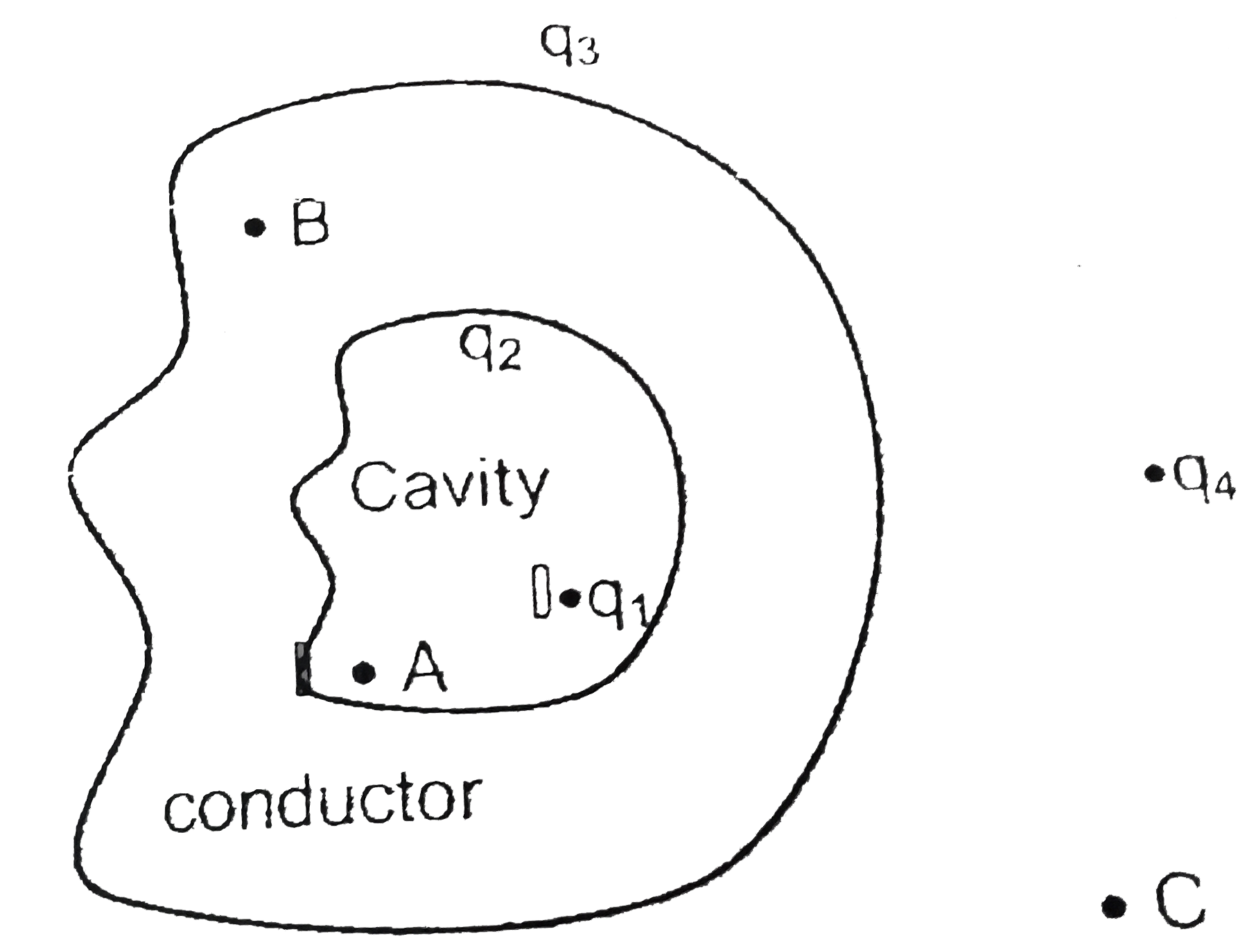
We have a fixed conductor having a cavity inside. There is a point charge q1 kept inside the cavity charge appearing at the inner surface of the cavity is q2. Charge appearing at outer surface of conductor is q3 and there lies another point charge q4 out side the conductor. Whole situation is shown in figure. q4. is held stationary by applying an external force →F0 on it. Three points A, B and C are shown. Answer the following two questions.
Q. If keeping the magnitude and nature of q1 fixed position of q1 is changed inside the cavity. Then choose the correct option(s)AExternal force required to keep q4 stationary remains unchangedBintensity of electric field at point C remains unchangedCintensity of electric field at point B remains unchangedDintensity of electric filed point B only due to q2 remains unchanged.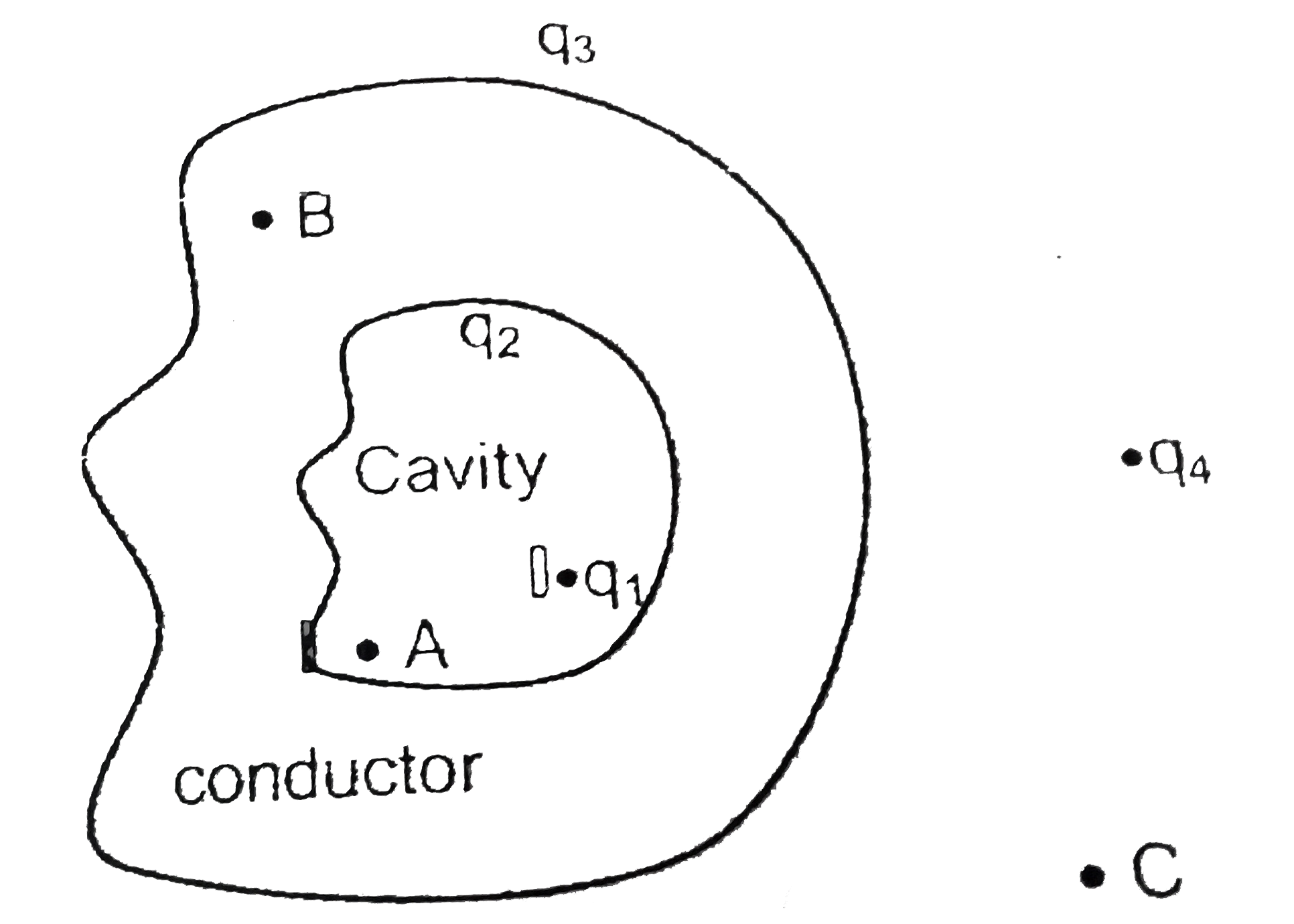
We have a fixed conductor having a cavity inside. There is a point charge q1 kept inside the cavity charge appearing at the inner surface of the cavity is q2. Charge appearing at outer surface of conductor is q3 and there lies another point charge q4 out side the conductor. Whole situation is shown in figure. q4. is held stationary by applying an external force →F0 on it. Three points A, B and C are shown. Answer the following two questions.
Q. If keeping the nature and position of q1 fixed, magnitude of q1 is changed, then choose the INCORRECT options(s)AExternal force required to keep q4 stationary remains unchangedBintensity of electric field at point C remains unchangedCintensity of electric field at point B remains unchangedDintensity of electric filed point B only due to q2 remains unchanged.
We have a charged conductor having a cavity. Electric field inside the cavity is _________ and the electric potential inside the cavity is __________ .
View SolutionA neutral spherical conductor has a cavity. A point charge q is located inside it. It is in equilibrium. An external electric field (E) is switched on that is directed parallel to the line joining the centre of the sphere to the point charge. (a) What is the direction of acceleration of the charge particle inside the cavity after E is switched on. (b) How is the induced charge on the wall of the cavity affected due to the external field.
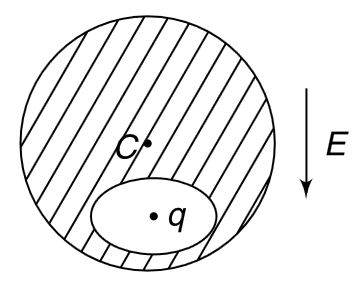
View Solution(a) A conductor A with a cavity as shown in Fig, is given a charge Q. Show that the entire charge must appear on the outer surface of the conductor.
(b) Another condutor B with charge q is inserted into the cavity keeping B insulated from A. Show that the total charge on the outside surface of A si (Q+q) fig.
(c) A sensitive instument is to be shielded from the strong electrostatic field in its enviroment. Suggest a possibe way.
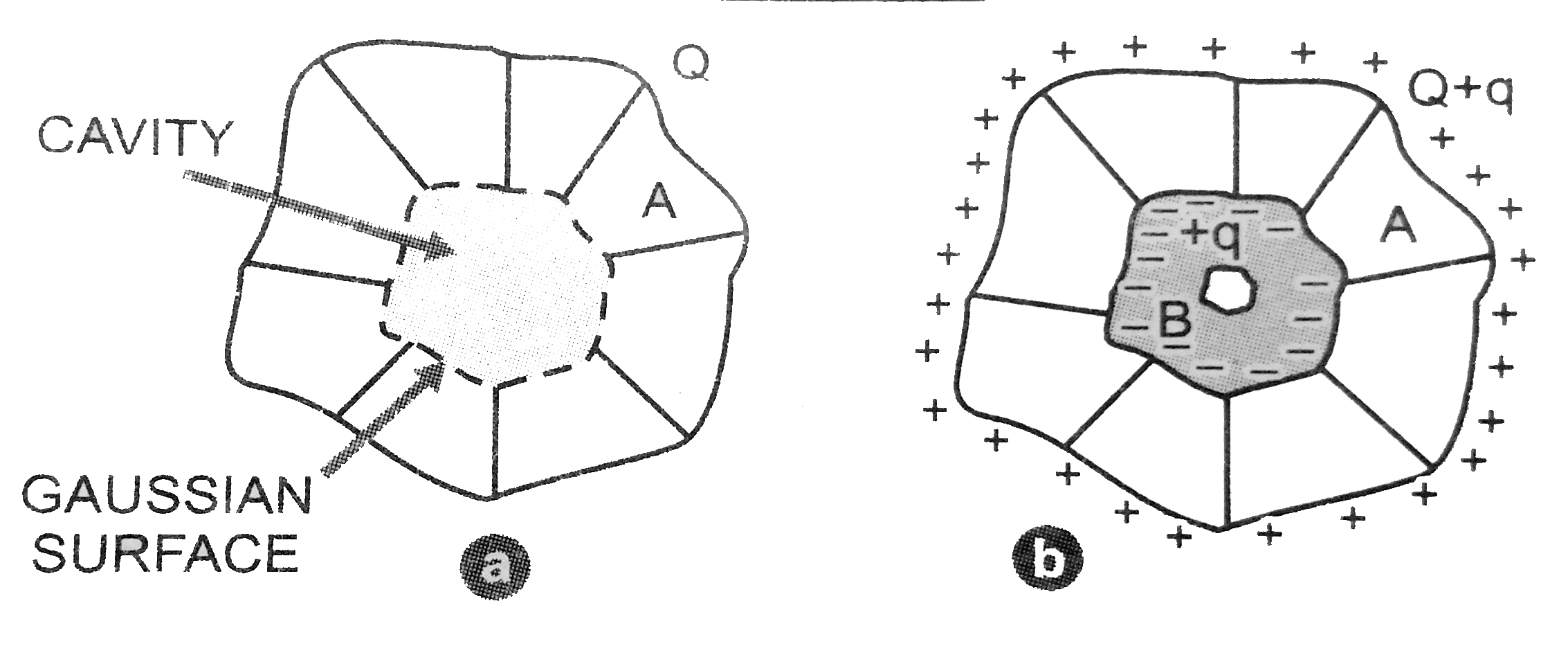
View SolutionA pellet with charge +Q is centered inside a spherical cavity in a conducting ball. The conducting ball has a charge -2q on it. The cavity in the ball is off-center, as shown in Fig. (a) How much charge resides on the inner surface of the cavity ? (b) Is the charge on the cavity surface distributed uniformly or nonuniformly ? Why ? (c ) How much charge resides on the outer surface of the conducting ball ? (d) Is the charge on the ball's outer surface distribution uniformly or nonuniformly ?
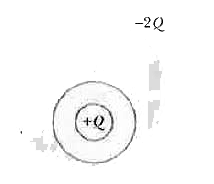
View SolutionConsider a conductor with a spherical cavity in it. A point charge q0 is placed at the centre of cavity and a point charge Q is placed outside conductor.
Statement-1: Total charge induced on cavity wall is equal and opposite to the charge inside
Statement-2: If cavity is surrounded by a Gaussian surface, where all parts of Gaussian surface are located inside the conductor, ∮→Ed→A=0 hence q∈duceed=−q0
View Solution
